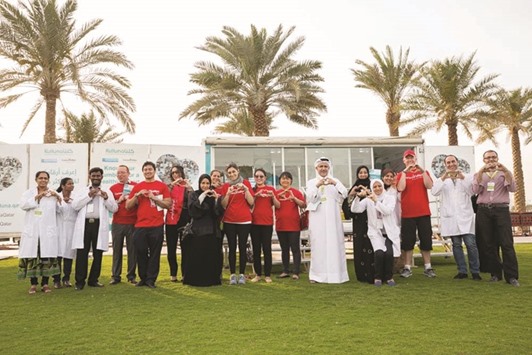Kulluna for Health and Safety, ConocoPhillips’s signature corporate social responsibility campaign in Qatar, is welcoming all visitors of this year’s Qatar International Food Festival (QIFF) to come to its booth at the Museum of Islamic Art Park until March 28 to learn more about heart disease risk factors and ways to prevent it.
People also have the opportunity to sign up for on-the-spot free checkups provided by medical professionals and measure heart rate, blood pressure, blood sugar, body mass index and cholesterol levels.
The Kulluna healthy heart team, which is made up of multi-discipline professionals from Hamad Medical Corporation, is offering people a range of advice, health checks and tests for those concerned about the state of their heart.
There is also the opportunity to talk to healthcare experts and learn about the risk factors and warning signs of heart disease and some potential lifesaving steps needed to help someone suffering from a heart attack.
Dr Khalid Saifeldeen, chairman of Kulluna, said: “We at Kulluna are delighted to be a part of an exciting community event like QIFF 2016 for the second year in a row. The underpinning of our work in collaboration with founding sponsor ConocoPhillips is to encourage people to live healthy lives.”
ConocoPhillips Qatar president Gary Sykes said, “It’s no surprise to us that the ‘Kulluna for a Healthy Heart’ stand at QIFF has attracted a large number of visitors on the first day of the festival, and the number of visitors is increasing each day. We look forward to receiving many more visitors before the end of the festival and encourage everyone in Qatar to come down for a fun and informative day.”
The “Kulluna for a Healthy Heart” campaign particularly focuses on the behaviours, lifestyle and risk factors that can lead to heart-related illnesses. These include smoking, unhealthy diet, obesity, lack of exercise, high blood pressure, diabetes and high cholesterol.
“Unfortunately, many people still do not realise that heart damage can begin during young age and can take years to be noticed by the person affected. Once the damage to the heart is done, it is not always possible to reverse it; so, the best course of action is to learn how to avoid causing the damage in the first place,” it was observed.

Officials with the Kulluna healthy heart team.


